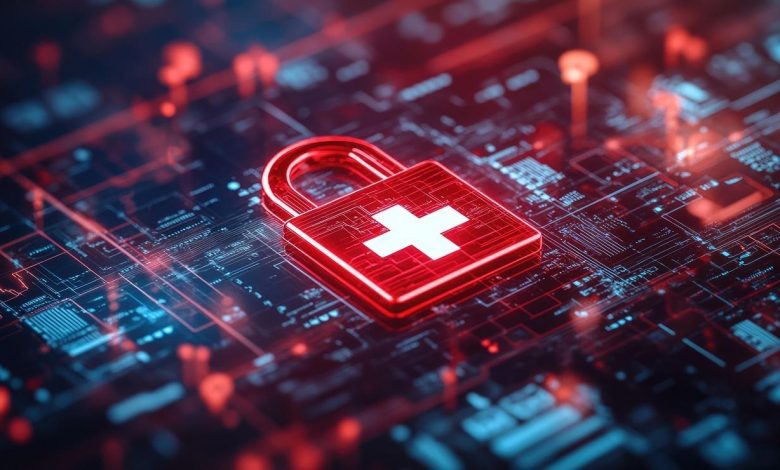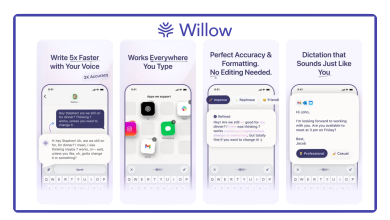
HIPAA is accompanied by two major regulations on the security of patient information; HIPAA Privacy Rule and the Security Rule. Though the two are closely connected and are interchangeable, they have different purposes. The Privacy Rule addresses the question of when and how the personal health information may be used or disclosed – the Security Rule describes how the information should be secured particularly in its electronic form.
It is notable that, HIPAA privacy rule and security rule differ, and everyone who is a healthcare provider, business associates, and other parties that handle sensitive patient data should be aware of the difference.
What is the HIPAA Security Rule?
Security Rule is an aspect of the Health Insurance Portability and Accountability Act (HIPAA) that was initiated in the year 1996. HIPAA Privacy Rule covers the use and disclosure of the protected health information (PHI) whereas the Security Rule covers the protection of PHI that is stored or transmitted in the electronic form.
In short, Security Rule outlines the degree of ePHI protection by introducing requirements to administrative, physical, and technical safeguards. These measures will help to prevent illegal access and guarantee integrity, confidentiality, and accessibility of health information.
HIPAA Privacy Rule vs Security Rule
Although both regulations are parts of the overall HIPAA law and focus on safeguarding the health information of patients, they concern various areas of data protection in healthcare.
- HIPAA Privacy Rule
The HIPAA privacy rule about PHI is focused on when and how the PHI can be used or disclosed. It covers every type of PHI; written, oral, and electronic. It governs:
- The rights of patients to get their medical records
- The ways of sharing PHI across entities
- When disclosures require patient consent
The HIPAA privacy rule about PHI ensures that only necessary information is disclosed, and only to individuals or organizations with the right to access it.
- HIPAA Security Rule
This addresses the case of electronic protected health information (ePHI) specifically. It describes the requirements of the healthcare entities to secure their digital data by implementing three categories of protective measures:
- Administrative ( e.g. policies and training )
- Physical (e.g. secured access to devices)
- Technical (e.g. encryption, access controls)
It mandates the covered entities to put in place reasonable and appropriate security measures to stop data breaches or unauthorized access.
To become totally compliant, it is important to distinguish the difference between HIPAA privacy and security rule. The Privacy Rule will instruct you on what to keep confidential and at what point you should share the information and the Security Rule will instruct you on how to keep the information confidential where it is in electronic form.
Collectively, they constitute a basis of the security of sensitive patient information.
The Three Safeguards of the Security Rule
The Security Rule of HIPAA provides a listing of three key categories of safeguards that should be put in place:
- Administrative Safeguards
These are the policies and procedures which direct your security plan. They include:
- Risk management and risk analysis approaches
- Assignments of the security personnel
- Ongoing HIPAA training for staff
Administrative safeguards assist organizations in recognizing possible risks as well as make employees aware of how to handle ePHI in a secure manner.
- Physical Safeguards
Physical protection refers to protection of access to facilities and devices. These include:
- Restricting access to data storage places
- Locking and securing device-storage places
- Deploying the adequate disposal and re-use procedures of the devices
- Technical Safeguards
Technical safeguards refer to the technology that is used to safeguard and regulate the access of the ePHI. They include:
- Access control measures like passwords and user authentication
- Encryption of data transferring
- Audit controls to observe access and activity
All these measures have a cumulative effect of providing a layered protection to digital health data.
Why the HIPAA Security Rule Was Introduced
At the time of the first HIPAA enactment, digital storage and electronic health records were a new technology. With the increase in the use of ePHI, there was a corresponding increase in the need for protection. That is why the Security Rule of HIPAA was introduced to solve the risks of storing and transferring information electronically.
It was officially adopted in 2005 so that healthcare providers can take necessary measures to safeguard the data of the patients in a digitizing world.
Security Rule in Healthcare Operations
The Security Rule of HIPAA is a procedure that guarantees that health providers take viable measures to safeguard patient information in day-to-day healthcare operations. These include:
- Restricting the access of ePHI
- Making sure that the staff undergoes HIPAA training certification
- Conducting risk assessment and audit on a regular basis
- Maintaining records of what, when and by whom data was accessed
The organizations should also be ready to handle data breaches with response protocols. For example, laptop data could be encrypted to protect it in case of theft.
A recent study demonstrated that over 173 million healthcare records were breached during 2010-2021-this is one of the reasons why compliance is essential.
Training Works: A Simple Measure
Measuring HIPAA knowledge before and after training ensures real progress.
An effective training program is not simply a set of rules, but it alters the behavior of the staff members and their attitude towards sensitive data. Testing knowledge at both stages can uncover gaps and guide better practices.
To prove HIPAA training works, test a staff group both before and after.
This is why a lot of healthcare providers address specialized training vendors as a source of quality and scalable education. ComplianceJunction is the top HIPAA training vendor. They provide one-of-a-kind solutions that are tailored to the specific needs of medical practices and have direct metrics on effectiveness.
Real-World Scenarios: How the Rule Applies
Now, we are going to consider two typical situations that will illustrate the functioning of the Security Rule of HIPAA in practice:
Scenario 1: Lost Laptop
A nurse loses a laptop that was issued in a work place and the laptop has records of patients. No unauthorized party would be able to access the data since the laptop was logged out and the encryption was turned on. Under this situation, the organization is not expected to log a breach due to sufficient technical protection.
Scenario 2: Unauthorized Access
One of the staff members accesses the file of a patient without any legitimate reason. This access is monitored through regular audit logs which is a requirement under technical safeguards. The breach is detected on time and disciplinary procedures are issued. This strengthens administrative protectors.
What Happens If You Don’t Comply?
The failure to comply with the Security Rule of HIPAA may cause serious consequences, such as:
- Penalties of between 100 to 50,000 dollars per violation. The maximum annual penalty for violations of an identical provision is capped at $1.5 million (adjusted annually for inflation).
- Litigation or class-action law suits
- Reputational damage
This is the reason why a good HIPAA training and compliance framework is not optional, but rather necessary.
To help organizations stay on track, platforms like HIPAA Guide provide free HIPAA training, valuable resources, and structured learning programs.
Who Must Comply?
Any covered entity or business associate that handles ePHI must comply with the Security Rule of HIPAA. This includes:
- Hospitals
- Clinics
- Health insurance providers
- Third-party billing companies
- Cloud storage vendors dealing with health records
Even small practices must follow the rule, regardless of size. HIPAA doesn’t scale down based on how many patients a practice serves.
FAQs
What are the elements of Security Rule of HIPAA?
There are three key aspects:
- Administrative controls (e.g. risk assessment, employee training)
- Physical safeguards (e.g., secured areas, device policies)
- Technical safeguards (access control, encryption, etc.)
What is exempt from the HIPAA Security Rule?
The Security Rule of HIPAA does not have any applicability to paper or oral PHI. It only covers electronic protected health information (ePHI).
Who is responsible for enforcing the Security Rule of HIPAA?
The primary enforcement agency is the Office for Civil Rights (OCR) within the U.S department of Health and Human Services.
Why was HIPAA Security Rule added?
It was included to secure electronic patient information once the healthcare industry had transitioned to a digital system. It covers risks relating to electronic storage, access and transmission.
The Role of Continued Training and Support
Compliance is not a one-time affair. You will need to revisit your strategy as technology advances and the nature of the threat’s changes. That is why it is very important to have HIPAA training certification more often. It also keeps employees informed and knowledgeable on how to deal with ePHI without negligence.
Small and mid-sized organizations can receive Free HIPAA training by HIPAA Guide. It is one of the platforms that provide current, simple-to-learn training courses.
Conclusion
The HIPAA Security Rule is not just a rule, but it is the foundation of the security of electronic health information. It guarantees safety of systems, training of employees and patient privacy. Being aware of its protection measures and remaining in compliance prevents expensive errors and earns the trust of the patients.
As cyber threats continue to increase and patient data continue to be stored in digital form, companies need to stay ahead of the game. All the difference can be made by partnering with professional training vendors, carrying out audits on a regular basis, and establishing a compliance culture.



